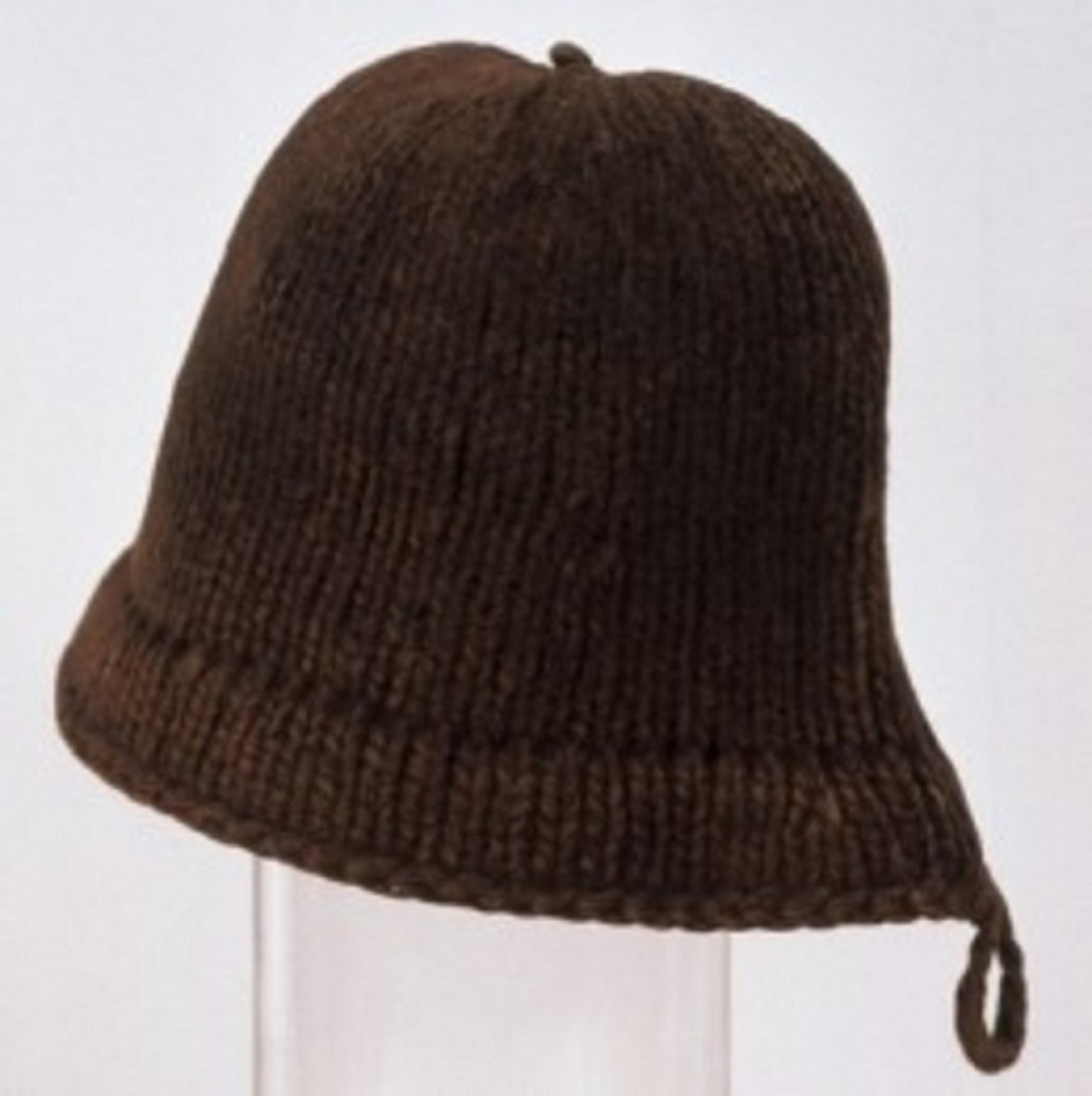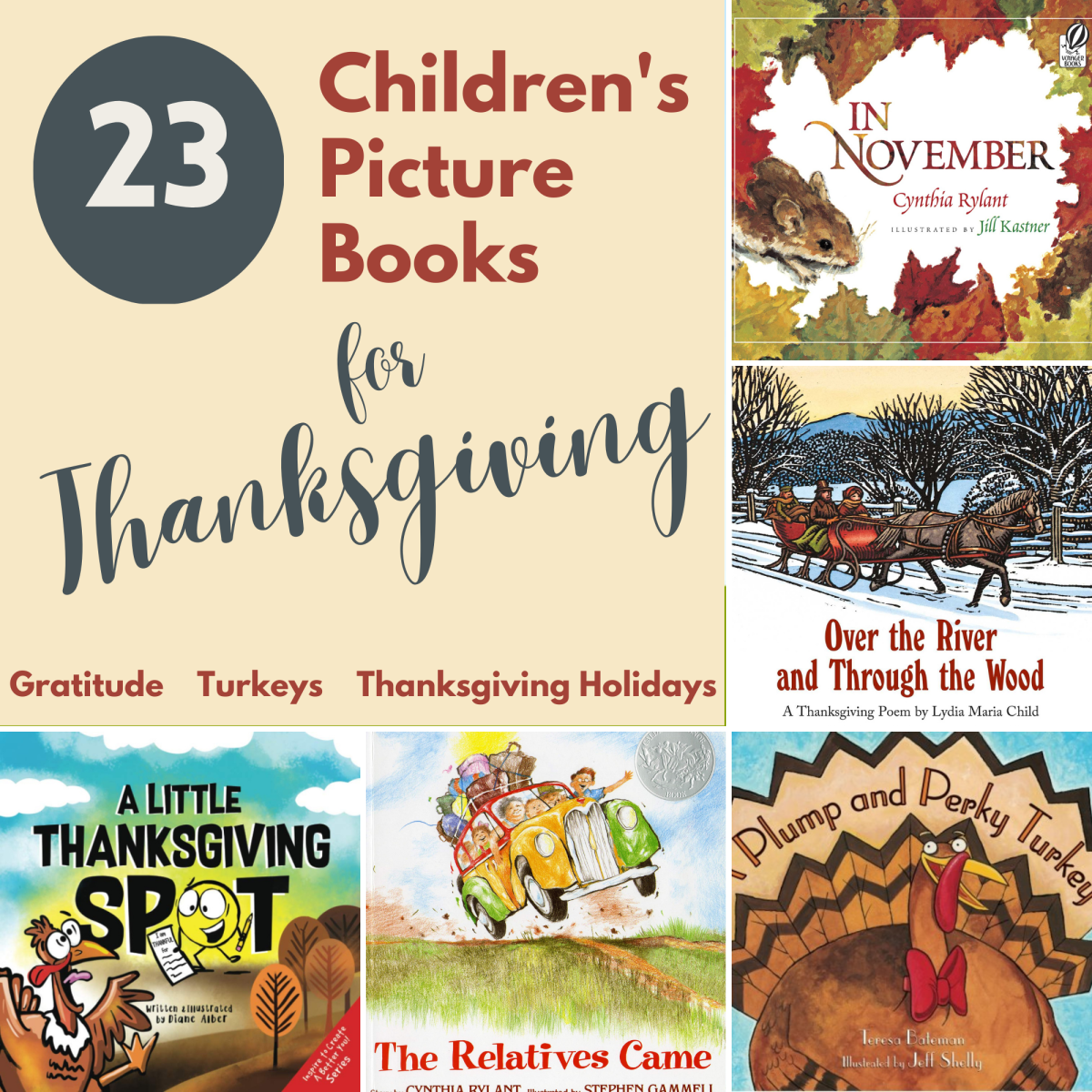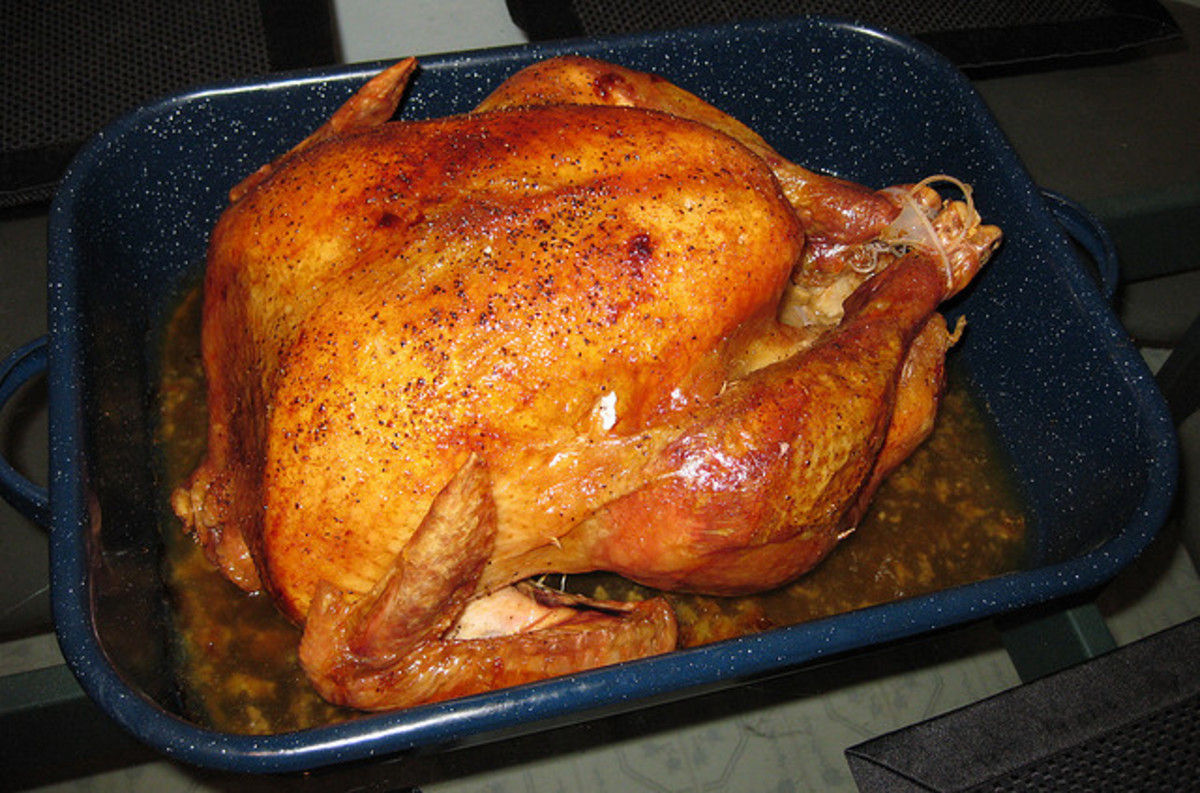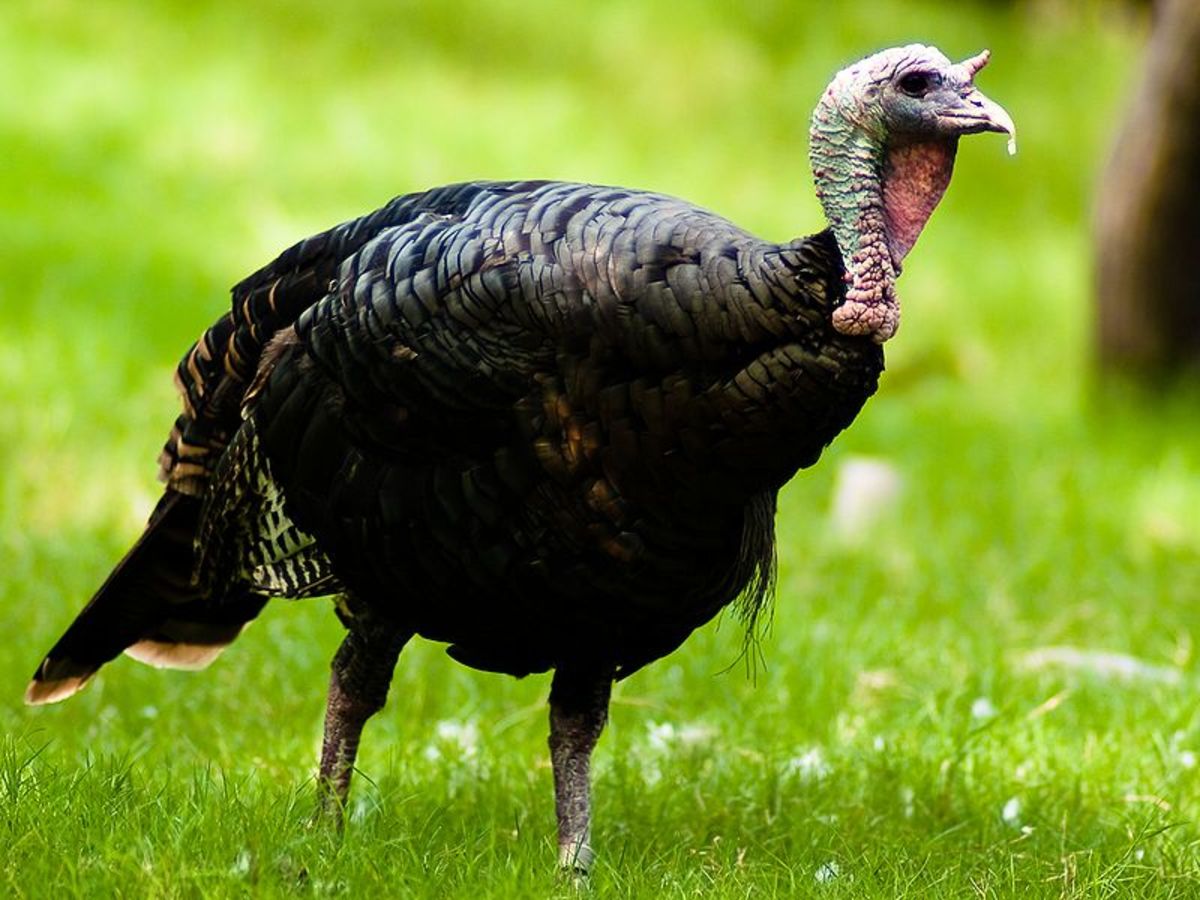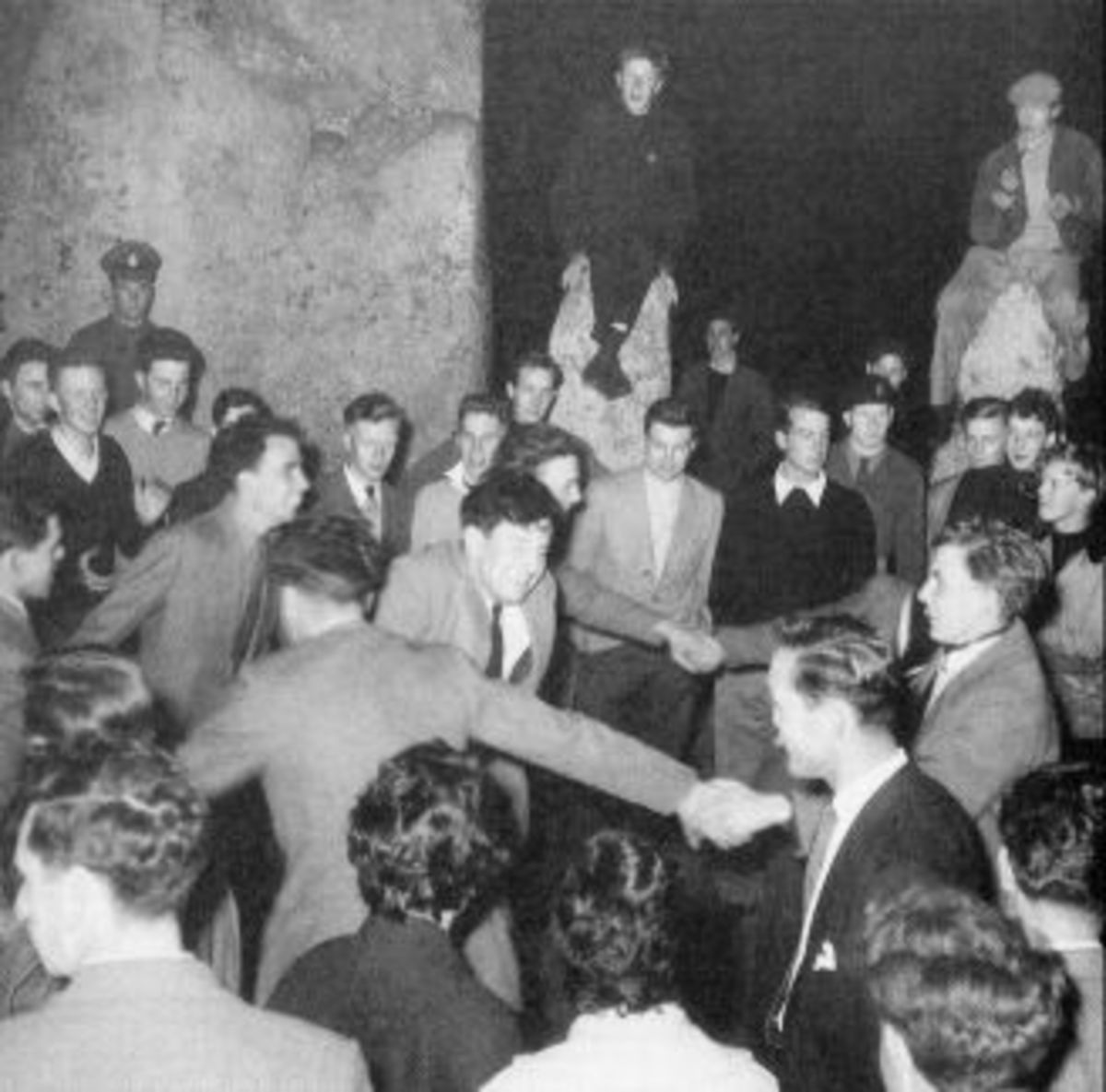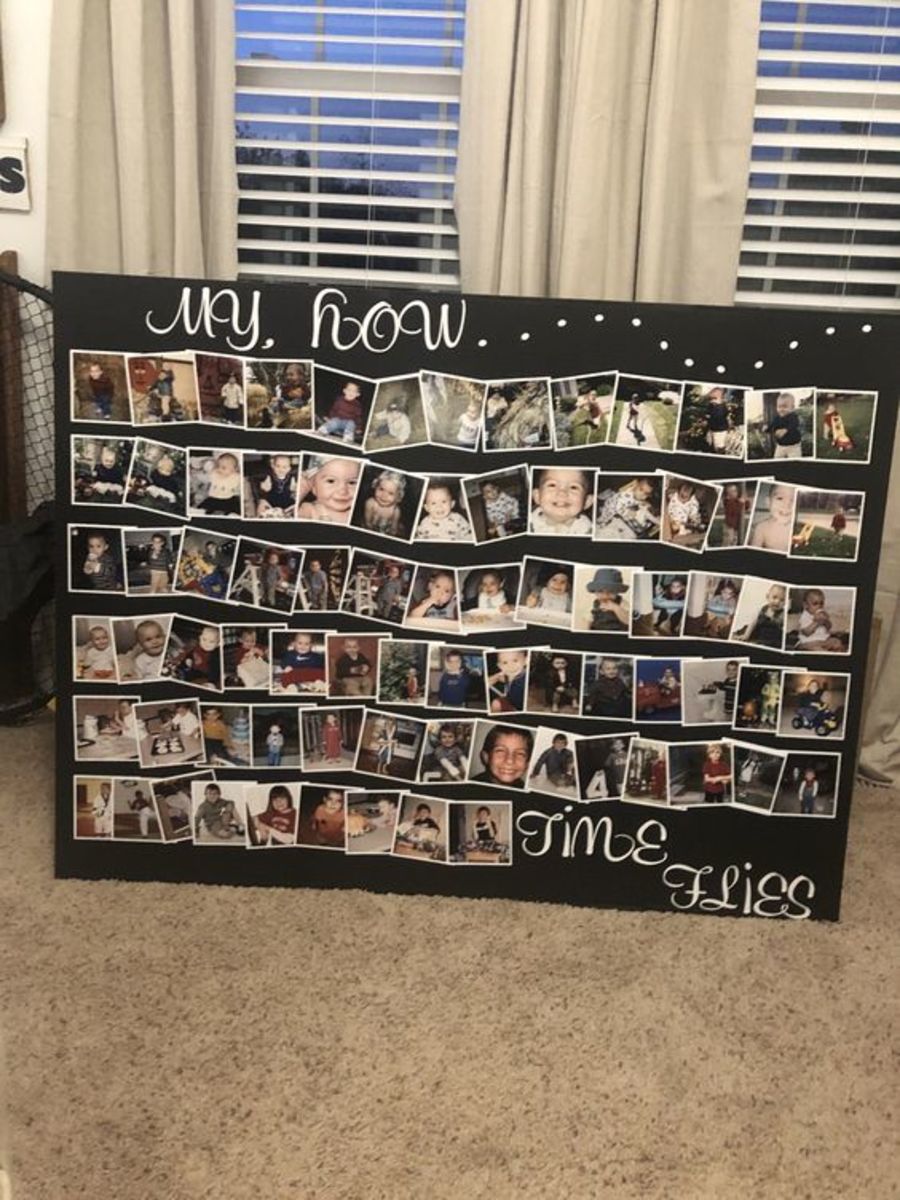Thanksgiving and Turkey Trivia
What is your favorite holiday?
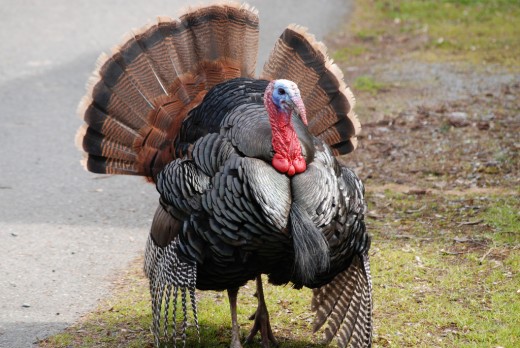
Thanksgiving & Turkey Trivia
Turkey
• Columbus thought that the land he discovered was connected to India, where peacocks are found in considerable number. And he believed turkeys were a type of peacock (they’re actually a type of pheasant). So he named them “tuka,” which is "peacock" in the Tamil language of India.
• Turkeys were one of the first animals in the Americas to be domesticated.
• Benjamin Franklin wanted the turkey to be our national bird.
• Domesticated turkeys cannot fly, however wild turkeys can fly up to 55 miles per hour over short distances.
• Turkeys are known to spend the night in trees!
• Only male (tom) turkeys gobble. Females make a clicking noise. The famous gobble is actually a seasonal mating call.
• Turkeys can drown if they look up when it's raining!
• Turkeys have heart attacks. When the Air Force was conducting test runs and breaking the sound barrier, fields of turkeys would drop dead.
• A turkey's field of vision is 270 degrees--one of the main reasons they're able to elude some hunters.
• A spooked turkey can run at speeds up to 20 miles per hour. They can also burst into flight approaching speeds between 50-55 mph in a matter of seconds.
• A turkey under 16 weeks of age is called a fryer. A five to seven month old turkey is called a roaster.
• The Guinness Book of Records states that the greatest dressed weight recorded for a turkey is 39.09 kg (86 lbs), at the annual "heaviest turkey" competition held in London, England on December 12, 1989.
• Wild turkeys, while technically the same species as domesticated turkeys, have a very different taste from farm-raised turkeys. Almost all of the meat is "dark" (even the breasts) with a more intense turkey flavor. Older heritage breeds also differ in flavor.
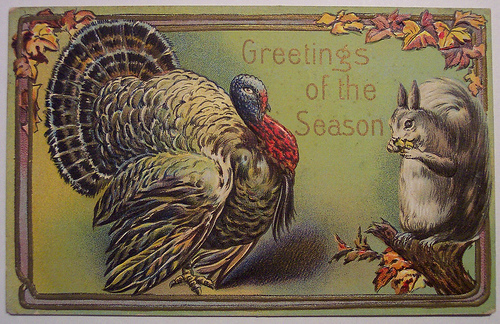
The First Thanksgiving
• The average age of the Mayflower passenger was 32. The oldest Mayflower passenger was 64.
• The First Thanksgiving lasted for three days.
• There was no milk, cheese, bread, butter or pumpkin pie at the original Thanksgiving Day feast.
• The cranberry:
• It got its name because the pale pink blossoms on the plant resembled a crane’s neck and drooping head, which reminded the Pilgrims of a crane. The name “craneberry” stuck, eventually becoming cranberry.
• Fresh cranberries are ideal for cranberry sauce. Cranberries of the highest quality will always bounce!
• Pilgrims
• Contrary to popular belief, the Pilgrims did not have big buckles on their clothing, shoes, or hats.
• Buckles did not come into fashion until the late 1600s.
• Native Americans
• The Plymouth Pilgrims dined with the Wampanoag Indians for the First Thanksgiving.
• Contrary to popular belief, Native Americans did not eat cranberries. They did, however, find them extremely useful for dying fabric and decorating pottery.
• The Native Americans wore deerskin and fur, not blankets.
What is your favorite Thanksgiving Day meat?
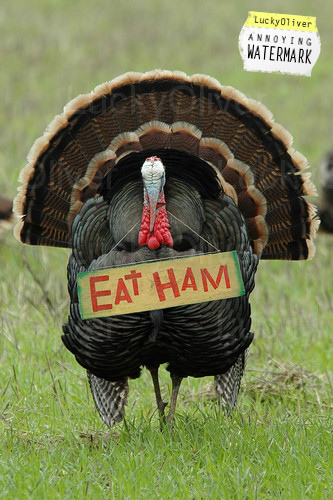
Thanksgiving in History
• In October of 1777, all 13 colonies celebrated Thanksgiving for the first time. This was a one-time affair commemorating a victory over the British at Saratoga.
• Several people wanted to have an official day of thanksgiving, including George Washington, who proclaimed a National Day of Thanksgiving in 1789. Several people did not want it.
• President Thomas Jefferson scoffed at the idea of establishing a national “Thanksgiving Day.” He thought the concept of Thanksgiving was "the most ridiculous idea I’ve ever heard."
• Benjamin Franklin wanted the national bird to be a turkey.
• Sarah Josepha Hale, a magazine editor, campaigned to make Thanksgiving a National Holiday in 1827 and succeeded.
• President Abraham Lincoln established the original date for our National Thanksgiving Day celebration in 1863.
• Every President since Lincoln proclaimed Thanksgiving Day. But in 1939, 1940, and 1941 Franklin D. Roosevelt proclaimed Thanksgiving the third Thursday in November to lengthen the holiday shopping season. This upset people.
• The North American holiday season (with the Christmas shopping season) traditionally begins when Thanksgiving. The next day, "Black Friday" is the biggest shopping day of the year. This tradition has held forth since at least the 1930s.
• Congress did not declare Thanksgiving a national holiday until 1941.
• There are three places in the United States named after the holiday’s traditional main course — Turkey, Texas; Turkey Creek, La.; and Turkey, N.C. There are also nine townships around the country named “Turkey,” with three in Kansas.
What is your favorite Thanksgiving side dish?
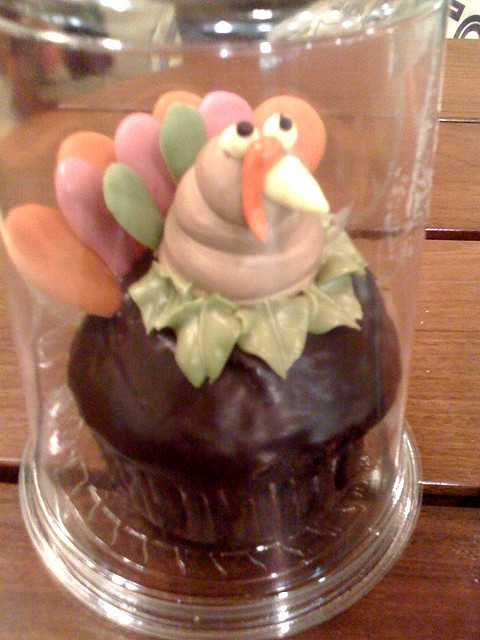
Modern Thanksgiving
• The average person consumes 4,500 calories on Thanksgiving Day. (Loosen the belt and take a nap)
• 91% of Americans eat turkey on Thanksgiving Day.
• Turkey is the traditional dish for the Thanksgiving feast. In the US, about 280 million turkeys are sold for the Thanksgiving celebrations. There is no official reason or declaration for the use of turkey. They just happened to be the most plentiful meat available at the time of the first Thanksgiving in 1621, starting the tradition.
• Fifty percent of Americans put the stuffing inside the Turkey.
• On the West Coast of the US, Dungeness crab is common as an alternate main dish instead of turkey, as crab season starts in early November.
• Corn is one of the popular symbols of thanksgiving. It came in many varieties and colors - red, white, yellow and blue. The oldest corns date thousands of years back and were grown in Mexico.
• More than 40 million green bean casseroles are served on Thanksgiving.
• Twenty percent of cranberries eaten are eaten on Thanksgiving.
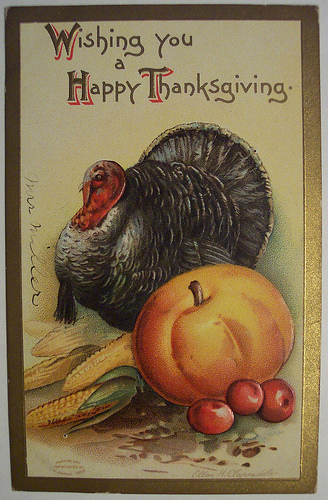
What are you thankful for?
Thanksgiving is a holiday that is celebrates being grateful. The pilgrims that came to this wonderful land but found their first winter very difficult and tragic. However, God provided for them in preparation for the next winter through the kindness and generosity of the Wampanoag Indians. The Indians taught the naïve colonists about fishing, planting and hunting. With their help, the Pilgrims were ready for the winter cold. After a bountiful harvest, the Pilgrims and Wampanoag celebrated with a three day feast.
In 1863, President Abraham Lincoln declared a National Day of Thanksgiving. He hoped to help our country to heal after the tragic Civil War. So, he set apart the last Thursday in November, and declared, “We often forget the Source from which the blessings of fruitful years and healthful skies come. … No human wisdom hath devised nor hath any mortal hand worked out these great things. They are the gracious gifts of the Most High God. … I therefore invite my fellow-citizens in every part of the United States … to observe the last Thursday of November as a day of thanksgiving and praise to our beneficent Father who dwelleth in the heavens.”
We in our world today face the same challenges that the Pilgrims faced so long ago. For their story carries the themes of our existence. We all face a struggle to survive, whether for ourselves, our families, even in our spiritual lives. We all need help to overcome the challenges that stand in our way. And just like then, God is there to provide for our needs.
The question is, “Will we respond to life’s challenges with the same noble resolve that they did?” They responded to the harshness of the their situation with hard work. They responded with cooperation. They treated each other with kindness and compassion. But the part of the story that we most often forget is that they responded with thankfulness.
What were the Pilgrims thankful for? There were so many things. They were thankful for the Wampanoag Indians, for the harvest, for their food, and for their survival. But they were not just grateful in general. They were thankful to God in specific. They were not afraid to admit that God is the source of all blessings. He had seen them across the great ocean. He had protected them through the first heart-rending winter. He taught them about new foods through the generous Wampanoag. It was God Who provided the bountiful harvest.
If we learn anything from the Pilgrims and the Wampanoag, we should make sure that we are not just grateful, but that we are grateful to God. We need to recognize the Heavenly Father as the Giver of all good things.
We should thank God, but not just for the provision for our daily lives. More importantly, we need to acknowledge and rely on His provision for our spiritual lives. Being lost in tragedy and condemnation of our sin is worse than the horrible trials that the Pilgrims had to endure. For our sin has no remedy outside of the provision of God’s own Son Jesus Christ. However, just as God brought the Pilgrims help and salvation from harsh physical conditions, Jesus brings salvation from the absolute self destruction of man’s sin.
As the Pilgrims sat down in celebration with the Wampanoag, so Jesus wants to sit and commune with us spiritually. Revelation 3:20 “Behold, I stand at the door, and knock: if any man hear my voice, and open the door, I will come in to him, and will sup with him, and he with me.” He wants to come into your life and give you what you need most. He offers forgiveness from sin, adoption into the family of God, a home in Heaven, and escape from Hell. Most importantly, He will give you victory over sin, Satan, and your own selfish nature.
John 3:16 “For God so loved the world, that he gave his only begotten Son, that whosoever believeth in him should not perish, but have everlasting life.”
Why not call on the name of the Lord today and thank Him for all of His provision in you life? More importantly, thank God for His provision of salvation. If you want to have God’s salvation in your life, pray to God like this:
Dear Heavenly Father,
I know that I am a sinner and have disobeyed your laws. But I know that you love me and that Jesus died for me. Now, I ask you to come into my life and save me. Please, forgive me of all my sin. Please be the Lord of my life. In Jesus name, Amen.



